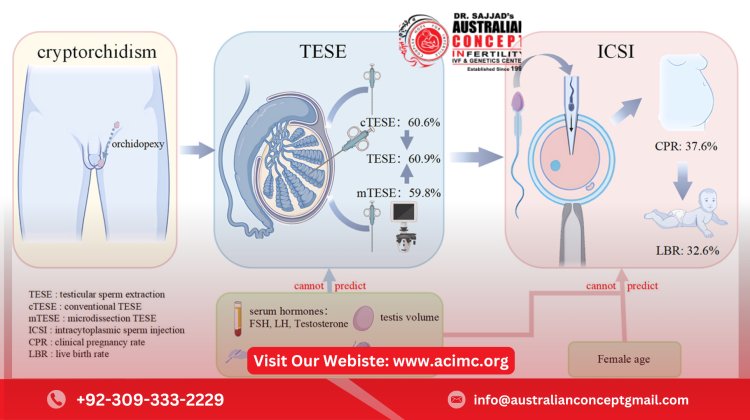How effective is azoospermia treatment
Azoospermia treatment can be highly effective, depending on whether the condition is obstructive or non-obstructive. For obstructive azoospermia, procedures like Microsurgical Epididymal Sperm Aspiration (MESA) and vasectomy reversal have high success rates, with sperm retrieval often successful in 40%-70% of cases. In non-obstructive azoospermia, Testicular Sperm Extraction (TESE) combined with ICSI offers a good chance of sperm retrieval and successful fertilization, with success rates ranging from 30%-60%. Hormonal treatments can also be effective in some cases, while sperm donation remains an option for men unable to conceive. Overall, advancements in these treatments have significantly improved the chances of conception for men with azoospermia.

Introduction
Azoospermia, the medical condition characterized by the complete absence of sperm in semen, is one of the leading causes of male infertility. Approximately 1 in 10 men with infertility issues are diagnosed with azoospermia. For many, this condition presents a significant challenge when it comes to fathering children, but the good news is that azoospermia treatment has advanced significantly in recent years.
Understanding how effective azoospermia treatment is, and knowing the available options, can offer hope to men facing this condition.
What is Azoospermia?
Azoospermia occurs when a man has no sperm in his ejaculate, which means he cannot father a child through natural means. There are two types of azoospermia:
- Obstructive Azoospermia: This occurs when there is a blockage in the male reproductive tract that prevents sperm from being ejaculated, even though sperm production is normal.
- Non-obstructive Azoospermia: This happens when the sperm production process is impaired, usually due to problems in the testes, such as low sperm count or impaired sperm production.
Both types can be treated, but the treatment options vary depending on the cause of the condition.
Azoospermia Treatment: How Effective Is It?
1. Treatment for Obstructive Azoospermia
Obstructive azoospermia is often easier to treat than non-obstructive azoospermia. If the blockage can be identified and removed, normal sperm production can resume, and sperm can be retrieved directly from the testes or epididymis.
Microsurgical Epididymal Sperm Aspiration (MESA)
MESA is a surgical procedure used to collect sperm directly from the epididymis, a small tube that stores sperm. This method is particularly effective for men with blocked ducts but normal sperm production in the testes. The procedure is minimally invasive and allows sperm retrieval without the need for ejaculation. The sperm can then be used in In Vitro Fertilization (IVF) or Intracytoplasmic Sperm Injection (ICSI).
Effectiveness: MESA has shown high success rates for sperm retrieval in men with obstructive azoospermia, with success rates varying from 40% to 70%, depending on the case.
Vasectomy Reversal
For men who have previously undergone a vasectomy, vasectomy reversal is a potential solution for obstructive azoospermia. The surgery involves reconnecting the vas deferens (the tubes carrying sperm from the testicles to the urethra) to restore the normal flow of sperm.
Effectiveness: The success of vasectomy reversal depends on the time elapsed since the vasectomy, with higher success rates in men who have undergone the procedure within 10 years. The success rate for vasectomy reversal is typically around 50% to 70%.
2. Treatment for Non-Obstructive Azoospermia
Non-obstructive azoospermia occurs due to poor or absent sperm production. It can be a more challenging condition to treat. However, recent advances in testicular sperm extraction and genetic analysis have significantly improved outcomes for men with this condition.
Testicular Sperm Extraction (TESE)
TESE is a surgical procedure in which a small tissue sample is taken directly from the testicle to look for sperm. Even if no sperm is present in the ejaculate, there may still be some sperm within the testicle tissue. In some cases, sperm retrieved through TESE can be used in ICSI, where a single sperm is injected into an egg for fertilization.
Effectiveness: The success rate of TESE varies depending on the underlying cause of azoospermia. In cases of severe sperm production failure, the chances of successful sperm retrieval can be lower, but with advancements in techniques, the success rate of TESE ranges from 30% to 60%.
ICSI and IVF for Non-Obstructive Azoospermia
If sperm is successfully retrieved via TESE, Intracytoplasmic Sperm Injection (ICSI) can be used to fertilize the egg. ICSI has significantly increased the chances of successful fertilization, even in cases where sperm counts are very low or absent.
Effectiveness: The success of ICSI in treating non-obstructive azoospermia depends on the quality and quantity of sperm retrieved from the testicle. ICSI has proven highly effective in such cases, offering a good chance of conception when combined with IVF.
Hormonal Treatment for Azoospermia
In some cases, azoospermia may be related to hormonal imbalances. Medications such as gonadotropins or clomiphene citrate can be used to stimulate sperm production. While not effective for all patients, hormone therapy can be beneficial for some men, particularly those with a condition called hypogonadotropic hypogonadism.
Effectiveness: Hormonal treatment is less commonly successful compared to surgical options, but it may work in certain cases of non-obstructive azoospermia, particularly if the underlying cause is a hormonal imbalance.
Effectiveness: Sperm donation offers a 100% success rate in terms of producing a child with no genetic link to the father.
Conclusion:
Azoospermia treatment can be highly effective, but the success rates depend on the underlying cause of the condition. For men with obstructive azoospermia, surgical procedures like MESA and vasectomy reversal offer high success rates. For non-obstructive azoospermia, sperm retrieval through TESE combined with ICSI provides a viable treatment option. Additionally, hormonal therapy and sperm donation may also be considered in some cases.
If you're struggling with azoospermia, it's important to consult an infertility specialist who can guide you through the available treatment options and help improve your chances of conception. With modern advancements in fertility treatments, many men with azoospermia have the opportunity to become fathers, even if their sperm count is low or absent in their semen.
What's Your Reaction?
















